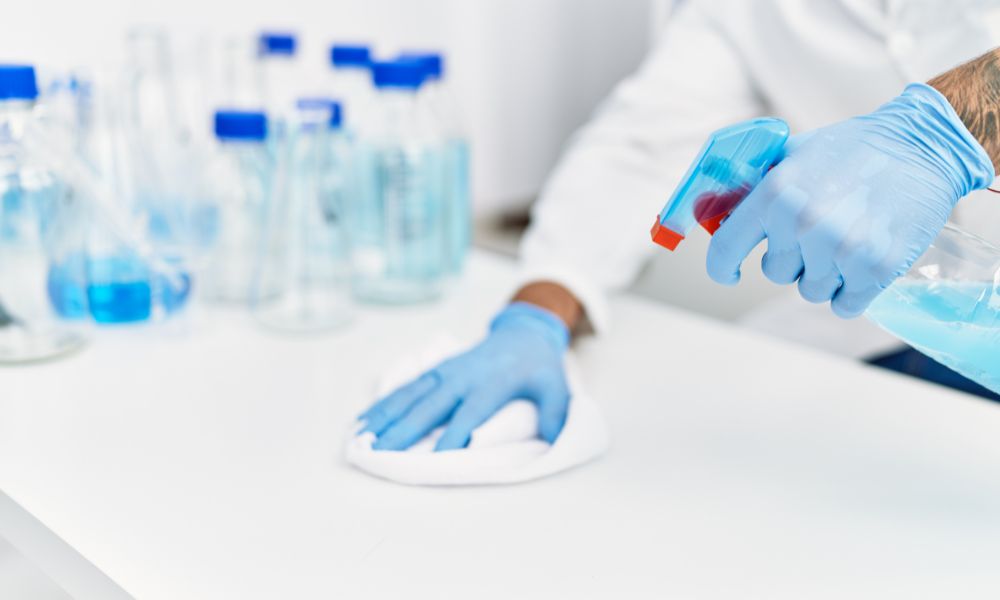Your cart is currently empty!
Tips and Tricks for Cleaning Your Laboratory

Cleanliness is a critical component of safety and accuracy in laboratory management. A clean lab impacts every application you conduct, from ensuring a sterile environment for medical research to maintaining the purity of chemical testing. Here are some expert tips and tricks for cleaning your laboratory, enhancing safety, and maintaining your lab’s high standard of cleanliness.
Develop a Compliant Cleaning Schedule
A laboratory cleaning schedule requires a detailed timetable adhering to industry standards and the specific needs of each lab. The first step to a clean lab is to develop a schedule that aligns with regulatory compliance. Laboratory workers should regularly clean and sanitize their work surfaces and lab equipment after each use to remain safe and compliant. Remember to document all cleaning activities, including which agents you use and any irregular findings, to promote thorough lab bookkeeping.
Use the Appropriate Cleaning Agents
Choosing the right cleaning agents is one of the most critical decisions in laboratory sanitation. Depending on the nature of your research and the materials you’re cleaning, choosing the wrong solvent can lead to contamination or chemical reactions. Acidic solutions might be unsuitable for surfaces susceptible to corrosion, while harsh alkalis could damage glassware. Consider using a neutral detergent or soap for general use and more specific agents like 70% ethanol or hydrochloric acid for specific cleaning applications.
Use Proper Cleaning Tools
The cleaning tools you choose are just as critical as the cleaning agents. You should designate each brush, mop, and cloth for specific uses to prevent cross-contamination. Color coding may be ideal in biological labs—for example, a red mop for contaminated areas and a blue mop for general cleaning. Invest in high-quality microfiber cloths that trap dust better than traditional fabrics. Ensure your staff understands how to disassemble equipment to clean every nook and cranny and use cleaning equipment that can reach those corners, such as manual brushes or autoclaves.
Dispose of Old Chemicals and Samples Properly
Regularly assessing and disposing of expired or unusable chemicals and samples is a pivotal aspect of lab hygiene. These assessments allow your lab staff to create much-needed space and prevent accidental use of deteriorated reagents, which could affect experiment results. Develop a systematic removal protocol for outdated items, ensuring your lab disposes of waste by local, national, and international regulations.
Laboratory cleanliness must be an integral part of the daily workflow. By implementing these tips and tricks for cleaning your laboratory, you can ensure your laboratory is a pristine and safe environment for scientific innovation. Get started on your cleaning protocols by stocking up on the cleaning solvents and materials you need at Post Apple Scientific. Here, you can buy hydrochloric acid and other common laboratory cleaning products. Browse our chemical supplies today to help promote a safe and sanitized lab environment.
Leave a Reply